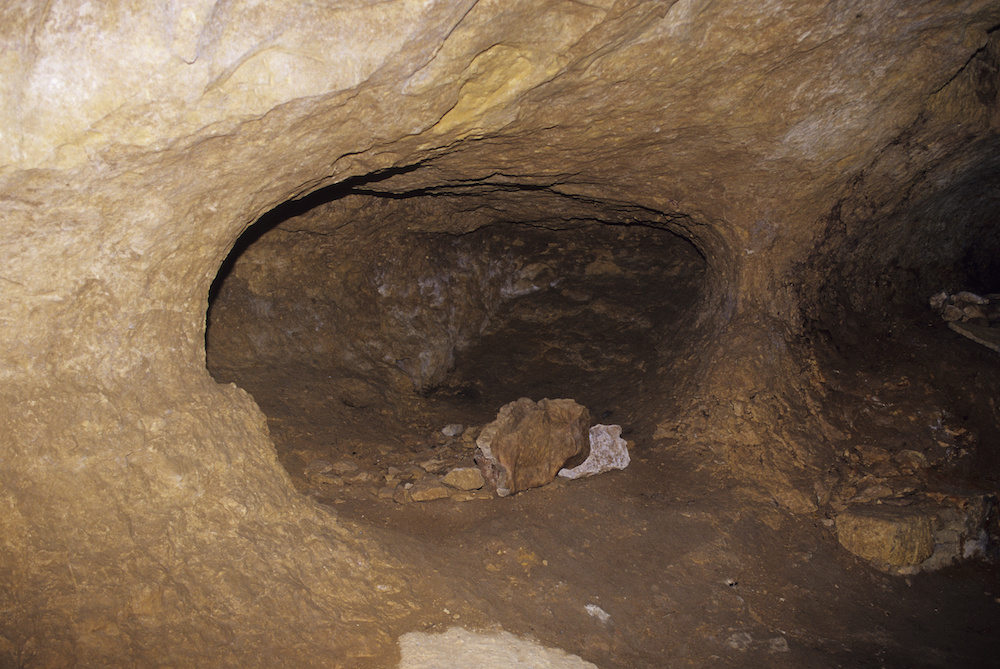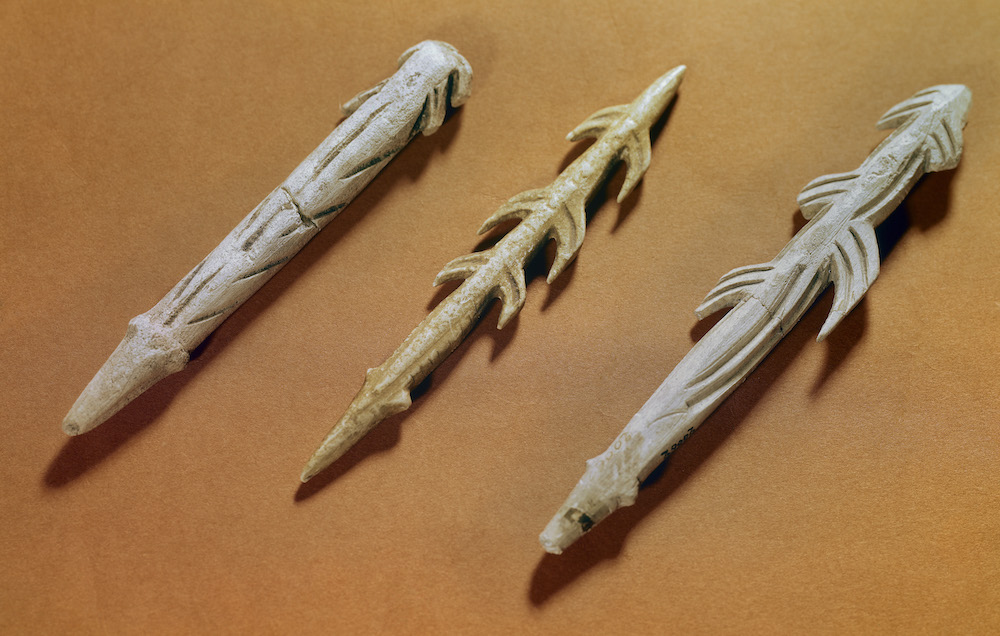The Blockbuster Exhibit That Shouldn’t Have Been
Museum professionals often point to the 1972 to 1981 Treasures of Tutankhamun tour as the beginning of the blockbuster exhibit era, in which museums host exhibitions that appeal to popular imagination, not necessarily curatorial interests.
To draw large crowds, museums sometimes sensationalize exhibitions, especially when it comes to displaying human bodies. Such was the case in 1927 at the Field Museum in Chicago with the initial display of “Magdalenian Girl,” the most complete European Upper Paleolithic skeleton in any museum in North America.
Thanks to the self-correcting nature of scientific research, we know now that sensationalism was misplaced.
Magdalenian Girl is the name given to a nearly complete skeleton discovered at the Upper Paleolithic archaeological site of Cap Blanc, near Laussel in Southwestern France’s Dordogne Valley. “Magdalenian” refers to an archaeological time period in Europe that we now know dates between 12,000 and 20,000 years ago.
Cap Blanc is one of many remarkable cave sites in the vicinity of Les Eyzies-de-Tayac, a beautiful town that serves as a base for hundreds of thousands of tourists who visit the dozens of Middle and Upper Paleolithic archaeological sites in the area. Cap Blanc is especially noteworthy for its magnificent, decorative stone friezes of horses, bison, and reindeer. More than a century ago, the landowner, Jacques Grimaud, developed the site for tourists, and it is still open to the public.
In 1911, a construction worker excavating the front of the rock shelter discovered a human skeleton. Thankfully, he recognized the find’s potential importance and told his supervisors; they then notified archaeological experts in Paris. Those experts, Louis Capitan and Denis Peyrony, spent three days excavating the skeleton en bloc (within its original matrix) so it could be shipped to Paris and excavated from the block slowly and precisely.
After removing it from the matrix, Capitan and Peyrony shipped the skeleton back to Grimaud in 1915. Seeking to get rich, Grimaud attempted to sell it for US$12,000 (equivalent to more than US$329,000 when adjusted for inflation).
In 1916, in an apparent effort to tap into U.S. riches, Grimaud sent the skeleton to the American Museum of Natural History in New York, allegedly smuggling it out of France with forged paperwork that declared it to be the bones of a dead U.S. soldier!
The American Museum, like other potential buyers, balked at Grimaud’s price. The skeleton sat in storage in New York, unsold, for nearly a decade. In 1926, Henry Field, the Field Museum’s assistant curator of physical anthropology at the time and a cousin of museum President Stanley Field, entered the fray.
Sensing Grimaud’s desperation, Field negotiated a price of US$1,000, one-twelfth the original (roughly US$16,000 today). Field quickly shipped Magdalenian Girl to Chicago, almost certainly dreaming about how he would leverage this acquisition into a powerful exhibition for his family’s museum.
Even in 1926, Field knew the Cap Blanc skeleton was the most important Upper Paleolithic skeleton available for research in any museum in North America. It remains one of the most important, given its age and preservation. That said, Magdalenian Girl has been the subject of speculation and sensationalism for more than a century.
First, Capitan or Peyrony (the records are unclear) suggested the skeleton belonged to the sculptor of Cap Blanc’s friezes, who somehow romantically died, or was buried, within striking distance of their art. Unfortunately, there is no direct link between the friezes and the skeleton, which were found 2 meters apart horizontally and 60 centimeters apart vertically.
There was also speculation about an “ivory point” supposedly found near the skeleton’s central body cavity. Field surmised that the skeleton belonged to a young woman killed by a jealous lover with an ivory harpoon!
When the Field Museum first displayed Magdalenian Girl in 1927, Field’s speculations turned the exhibition into a blockbuster. Media outlets picked up the romanticized story, and thousands of people attended the Field Museum on the first day she went on display. As Field recalled in his 1955 memoir:
“The evening and morning papers and the press services had carried the dramatic story of the arrival in Chicago … of a 20,000-year-old [sic—see below] Magdalenian girl—‘the only prehistoric skeleton in the United States,’ which she was at the time. This was front-page news. The story went all over the world.
There was much speculation. Why had she been buried beneath the frieze of horses? Was she killed by her lover’s ivory lance point? Was it by another Cro-Magnon girl? Was her brother avenging the family’s honor? Was she killed in battle? Why was she buried in the sanctuary? Was she the daughter of the sculptor–high priest?
That Saturday 22,000 visitors came to the museum, most of them to see ‘Miss Cro-Magnon.’ At noon, the crowd was so dense around her that captain of the guard, Sergeant Abbey, notified the museum director that two guards must be placed there to keep the people moving and orderly. … This was the first exhibit in the new building to capture the public and press imagination. That night I went to bed very happy.”
Field’s sensationalism served its purpose: It drew in thousands of paying customers. The question is, nearly 100 years later, what can we say about Magdalenian Girl scientifically?
In the early 2000s, when I served as head of collections in anthropology at the Field Museum, colleagues reexamined Magdalenian Girl using modern analytical techniques. In 2004, collections manager Will Pestle sent two small bone samples to Oxford University for radiocarbon dating.
Unfortunately, they yielded dates that differed by more than 2,000 years. The first sample dated to about 14,200 years ago, the second to roughly 16,600 years ago.
In 2006, Pestle submitted two more samples to the Oxford laboratory, and things got weirder. Dates from these two samples overlapped, which is good, but they were significantly younger than the 2004 samples, appearing to be only about 12,100 years old.
Something was clearly wrong.
Being from the same skeleton, all four dates should be internally consistent and therefore overlap. They should not span nearly 5,000 years. Analysis of archived correspondence at the Field Museum revealed the problem. Someone, at some time in the past, treated the bones with Ambroid, a cellulose nitrate-based cement that contaminated Magdalenian Girl with “modern” radiocarbon, thus making her seem too young when dated.
In 2005, Pestle, along with Field Museum Curator of Physical Anthropology Robert Martin and Mike Colvard, a professor of dentistry at the University of Illinois, Chicago, used high-quality digital X-rays to re-examine Magdalenian Girl’s teeth. To understand what they learned, we first need to travel back in time.
In 1932, Magdalenian Girl had been on display for five years but was never subject to expert analysis. The museum took her off display so Gerhardt von Bonin, a professor of human anatomy at the University of Illinois, Chicago, could examine her in detail. Because her wisdom teeth had not yet erupted, von Bonin concluded she was a (roughly) 20-year-old woman. (Wisdom teeth typically erupt between 18 and 22 years of age.)
If Assistant Curator Henry Field was trying to draw paying customers into the museum, his tactics succeeded.
When the modern research team saw the new X-rays, they knew von Bonin was wrong. It was not that Magdalenian Girl’s wisdom teeth had yet to erupt. Quite the contrary—her wisdom teeth were totally impacted! Based on that insight and the fact that the skeleton exhibited wear and tear similar to that of a person far older than 20, they determined Magdalenian “Girl” was actually a 25- to 35-year-old woman at the time of death.
In 2006, Pestle installed Magdalenian Woman back in the museum’s Evolving Planet exhibition, where she remains on display today. Importantly, Pestle put her in the fetal position on her left side, as she was originally discovered, rather than the extended position on her back, as she was displayed for nearly eight decades. One wonders why Henry Field displayed her lying on her back. Was it to make her adhere to modern American burial practices, and, therefore, pop culture, of the 1920s? Probably.
Finally, what about the ivory point? Correspondence on file at the Field Museum indicates that the American Museum repeatedly asked Grimaud, the French owner, if he found any artifacts in direct association with the skeleton; he repeatedly replied, “No.” This begs the question of where the harpoon point, and, therefore, Field’s speculation about Magdalenian Woman’s death, came from.
The artifact is still in Field Museum collections. We still do not know where it came from.
Did Henry Field commit scientific fraud with the extended supine presentation, the inclusion of the harpoon point, and his romantic interpretation about the death of Magdalenian Woman?
One can argue that yes, he did. At the very least, his fanciful interpretations went beyond whatever scant data he had. (Radiocarbon dating and X-ray technology were not available to archaeologists in the 1920s.)
If Field was trying to draw paying customers into the museum, his tactics succeeded; perhaps he was more showman than charlatan at heart. Whatever his motives were, it is difficult to envision visitors getting as excited by this archaeological exhibit in the absence of such sensationalism.
I remember seeing the exhibit of King Tut at the Field Museum in 1977. Long lines of eager attendees snaked down the grand north stairs and along the sidewalk toward the Shedd Aquarium and Adler Planetarium. People waited patiently in the elements to purchase tickets when the term “box office” meant a physical office, not a phone line or website. It was a wonderful exhibition and got me even more interested in archaeology than I already was.
At the time, there was also an amazing feedback loop that ran between pop culture and archaeology. Tut-mania was everywhere! Who can forget Steve Martin and the Toot Uncommons’ hilarious “King Tut” routine on Saturday Night Live in 1978? That song sold 3 million copies and made it to No. 17 on the Billboard Hot 100 chart.
Magdalenian Woman will never be as famous as King Tut, but the same feedback loop was at work in 1927 as in 1977. She got her 15 minutes of fame.



































